When I was a teenager I was heavily into wild and crazy motorcycles, the more off the wall the better. I had a slew of favorite custom bike builder posters plastered on my bedroom wall and as backgrounds on my computer. I visited West Coast Choppers in Long Beach and spent time at the Sturgis motorcycle rally meeting some of the craziest bike builders of the late 1990s and early 2000s. Out of every idea that found its way into bikes, my absolute favorite was the hubless wheel.
This eliminated any centralized hubs, spokes, or axles from the standard motorcycle wheel, resulting in a seemingly magical wheel that appeared to float while the bike went down the road. As I studied in college, I began to understand just how straightforward the idea was and I fell in love all over again. Things that seem like magic are even better when they are also easy to understand.
Even though the concept has made its way into dozens of crazy builds over the years and is no longer the unicorn of custom motorcycles, the hubless wheel still has the ability to make me drool when I see a new design. I’ll even admit that the concept is pretty terrible for a motorcycle as it adds so much unsprung weight that handling often suffers, but I just can’t get past how cool it looks going down the road.
A historical cousin, the monowheel, had its heyday in the 1930s when people started building both small and large vehicles that had a motor and seat mounted inside a giant wheel, in which the rider would steer the contraption very carefully. It never gained widespread use or popularity because it was inarguably a terrible idea to replace cars and trucks, but it nevertheless still inspires awe even now. There has been, and likely always will be, a fascination with rotating rings, wheels, or gears that appear to have no central structure because they are supported along the periphery of the ring.
This carries over into horology with a variety of creations that will always get my excitement going, including the peripheral winding rotor, which is seen far too infrequently. When it pops up, I am always anxious to see if something might been changed or a new design applied.
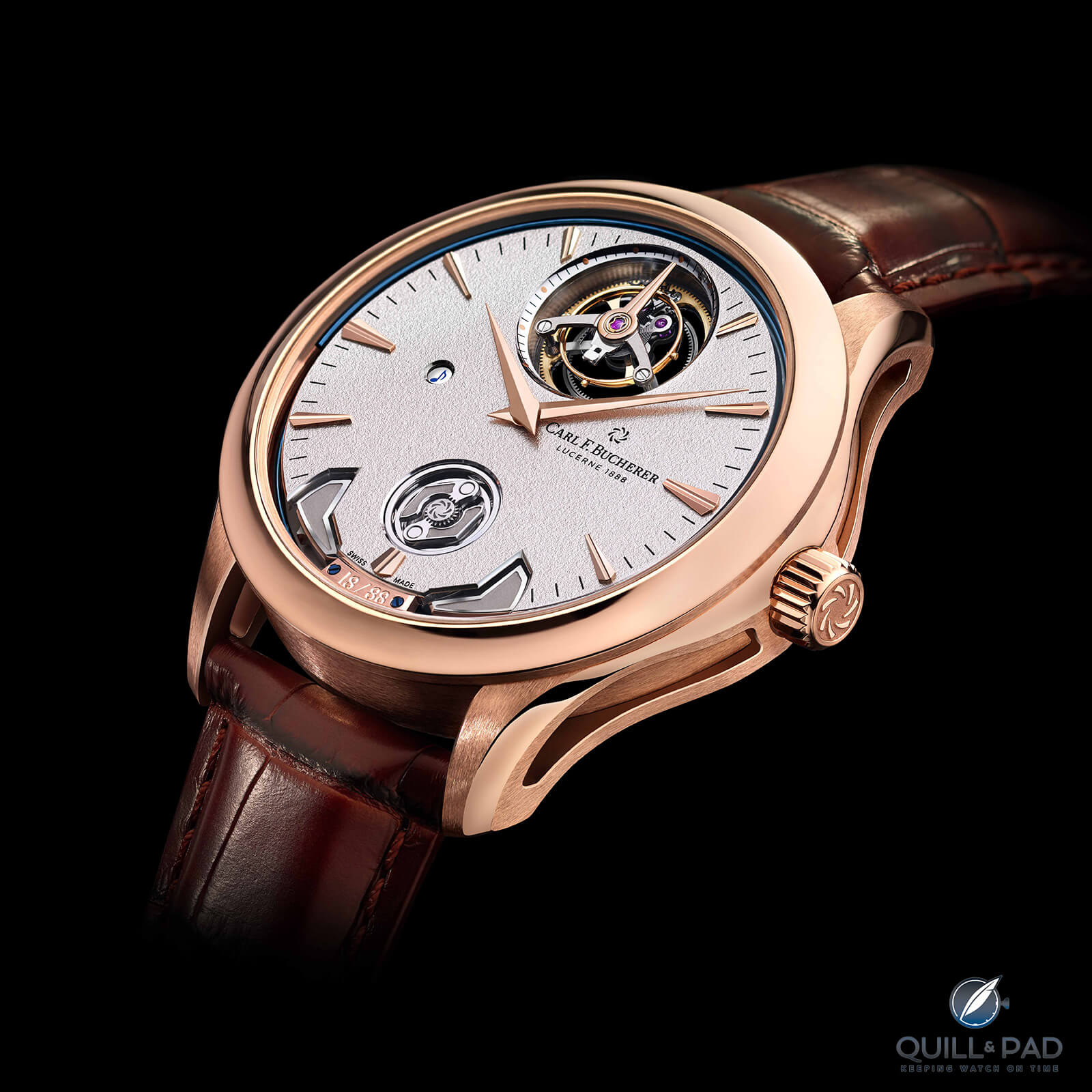
Carl F. Bucherer Manero Minute Repeater Symphony
Sometimes the discovery is better than I had imagined, as is the case with the new Carl F. Bucherer Manero Minute Repeater Symphony. Not only does it feature a very cool peripheral winding rotor, it has a few more tricks up its sleeve – like one of the most complicated mechanisms in watchmaking, the inimitable minute repeater.
Carl F. Bucherer Manero Minute Repeater Symphony
In the case of the Manero Minute Repeater Symphony, the name doesn’t give us the entire picture because, while the minute repeater is indeed the star of the show, the points that Carl F. Bucherer highlight include not one but three instances of a rotating component supported peripherally. I’ll dive into those in more detail a bit later.
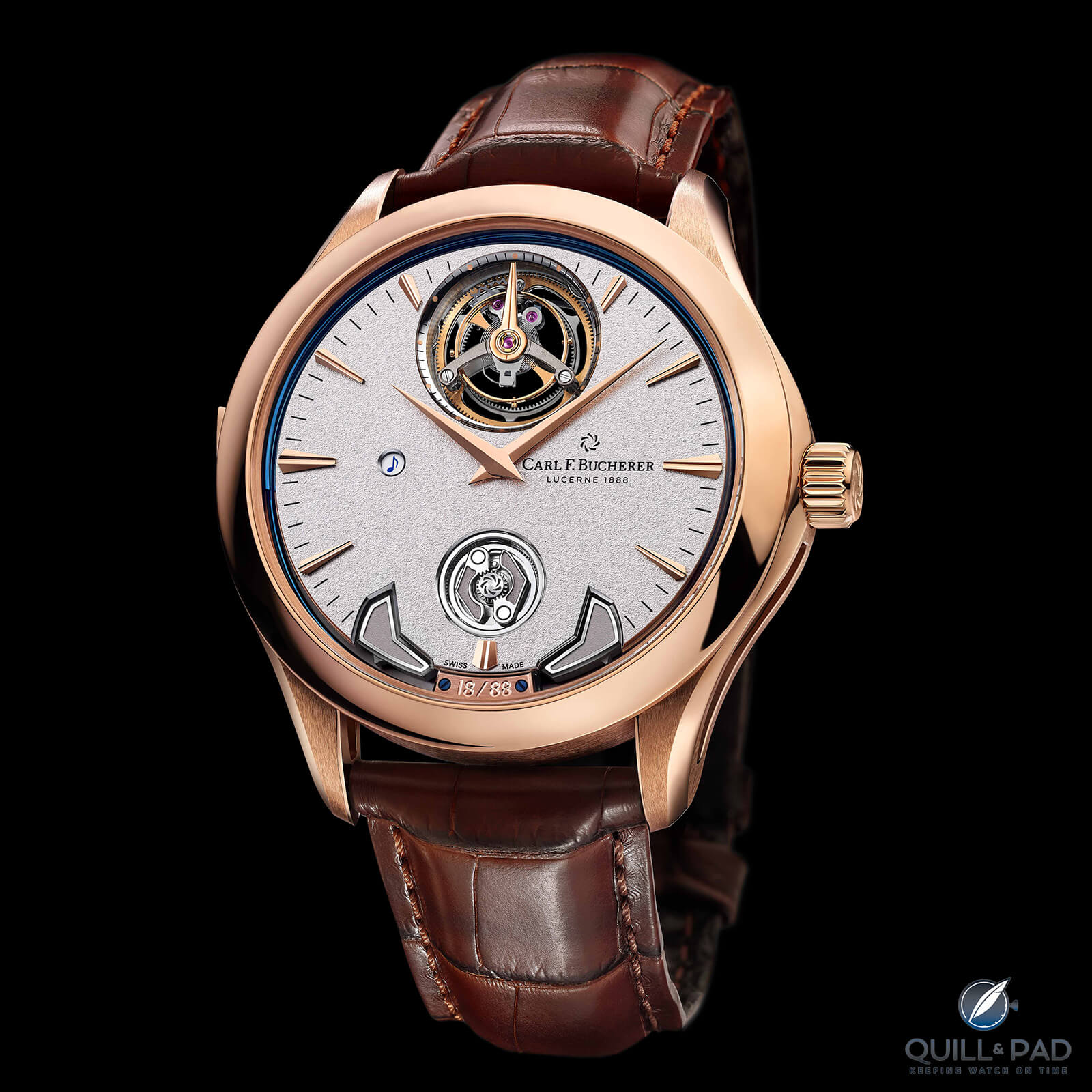
Carl F. Bucherer Manero Minute Repeater Symphony
At 12 o’clock is a fairly large tourbillon that is supported peripherally, and just above 6 o’clock we find the minute repeater regulator, which also features the same style of peripheral mounting as the tourbillon. These unique differences aren’t immediately evident, which helps the watch fly a bit under the radar – at least as much as a watch with a tourbillon and repeater hammers on the dial can.
The aesthetic is decidedly dressed down (compared to what it could be). The porthole showcasing the tourbillon escapement and the precise cutouts in the dial for the hammers aren’t as dramatic since all the components match the color of the dial for a clean, monochrome look.
The dial is smaller than the interior of the case to expose the blued gongs wrapping around the movement underneath, but the effect is also subtle, allowing the tourbillon to be the major focal point. Mounted on the tourbillon cage is a second hand featuring a stop-seconds mechanism for precise time setting.
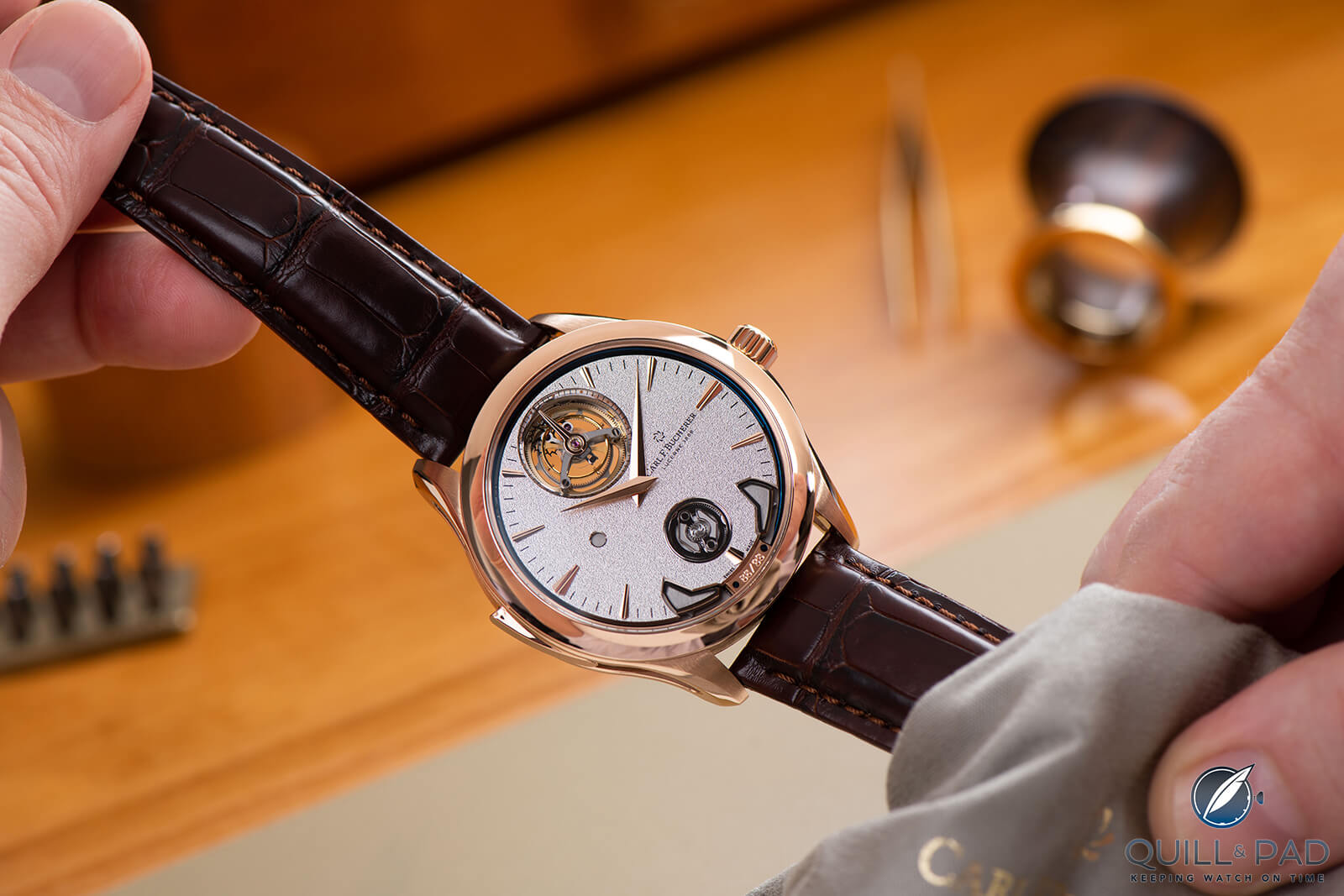
Carl F. Bucherer Manero Minute Repeater Symphony
The hands and hour markers are a contrasting gold to stand out from the dial, otherwise the color pallet is very simple. Opposite the brand logo at 3 o’clock is a very small window through the dial that provides an indication of whether the minute repeater is activated or locked, a feature tied to the crown to protect the movement from accidental damage.
The only other feature that stands out on the front is the edition plaque just below 6 o’clock at the case edge. This is actually the mounting block for the repeater gongs, making for a nice dual-purpose component.
Carl F. Bucherer Manero Minute Repeater Symphony: technical chops
Still, the look of the Manero Minute Repeater Symphony is rather restrained, but the mechanics are something to adore. I’ll almost always say that, but Caliber CFB MR3000 combines decidedly modern mechanical styling, some unique takes on construction, and a visual display of the mechanism that can keep you gazing for hours. Let’s start on the front before we move to the much more active rear of the watch.
As previously mentioned, the 60-second tourbillon is mounted peripherally on three ceramic ball bearings that help it appear to float in its window on the dial. With such a large opening and some depth to play with, this allows the tourbillon to stand out.
The tourbillon cage with its second hand gives the assembly a bit of a spaceship silhouette floating in a docking bay, though there is no clear intent for this even if I enjoy the style.

Carl F. Bucherer Manero Minute Repeater Symphony
The minute repeater regulator at 6 o’clock is probably more interesting mechanically simply due to the high speed at which it rotates compared to tourbillon. This component controls the speed at which the minute repeater mechanism advances through the tones and prevents damage from components rotating too quickly. The dual-arm centrifugal regulator spins incredibly fast, supported by three ceramic bearings.
This may seem relatively minor, but when a regulator spins keeping it balanced and free from vibration is critical to its performance and longevity.
With a typical central axis there are only four bearing surfaces, hopefully perfectly in line, which minimizes the amount of tolerance (microscopic gaps between parts) allowable in the system.
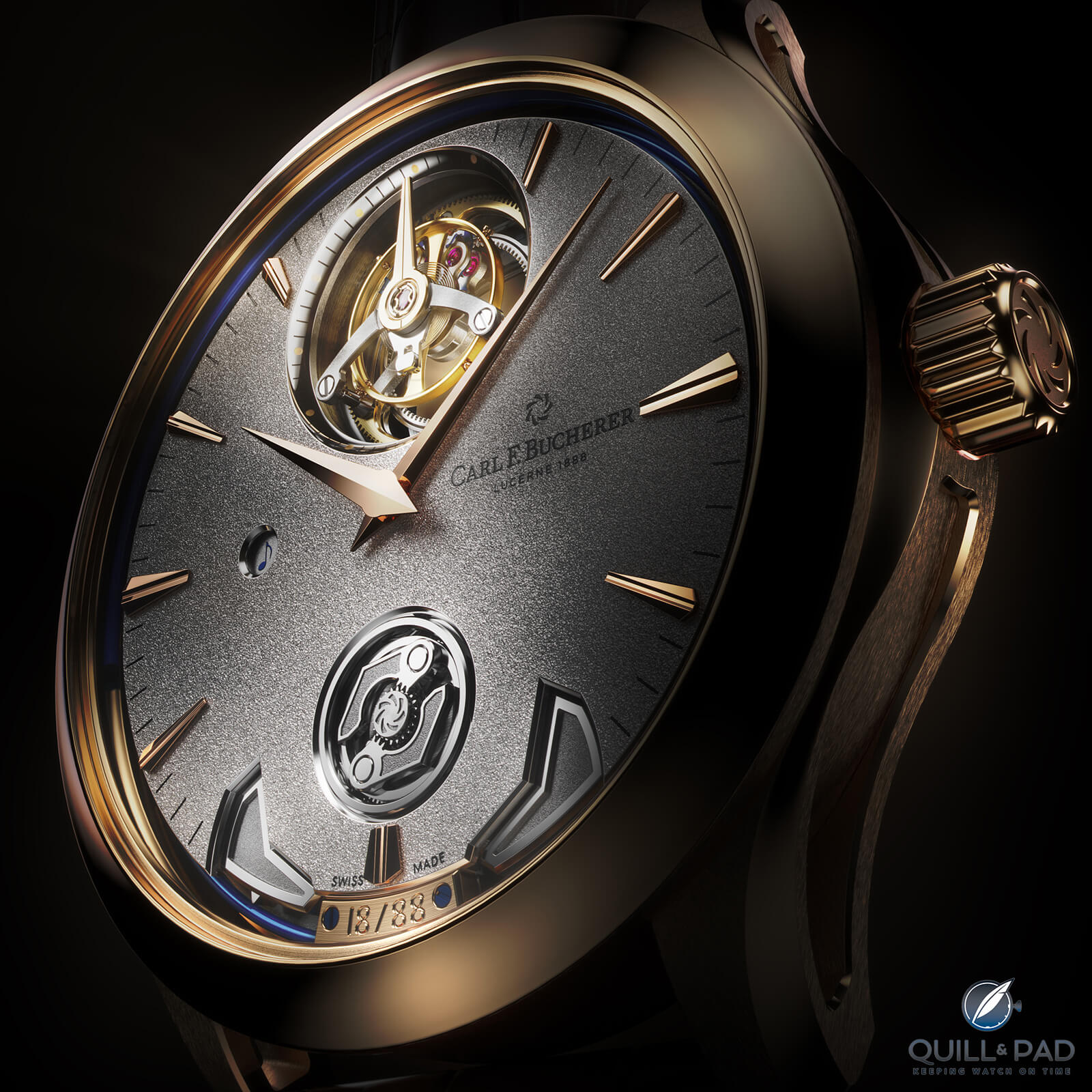
Carl F. Bucherer Manero Minute Repeater Symphony
With three ceramic ball bearings mounted peripherally, the number of potential inaccuracies doesn’t increase from two (concentric alignment and diameter) to three, but to seven since each bearing could be off in both the X and Y dimensions and the diameter of the regulator carriage could also be off. And this is a simplified count since the bearings have their own tolerance ratings for circularity, concentricity, play between the balls and the races, and other positional tolerances, which can come into play.
Basically, there is a higher chance for imperfections to disrupt the smooth functioning of a quickly spinning mechanism, so it is extra impressive to support the regulator in such a way. Since the regulator, tourbillon, and repeater hammers are the only mechanical parts visible on the dial, I appreciate that Carl F. Bucherer decided to not just stop with the peripheral winding rotor.

Carl F. Bucherer Manero Minute Repeater Symphony
Though once we flip the Manero Minute Repeater Symphony over, the joy of the winding rotor decision jumps out again.
Window to the soul
The rear of the case has a large sapphire crystal to allow a view of the incredible Caliber CFB MR3000. But unlike many minute repeaters, this is automatic – which is fairly uncommon – and yet goes for the perfect combination of form and function with the peripheral winding rotor.
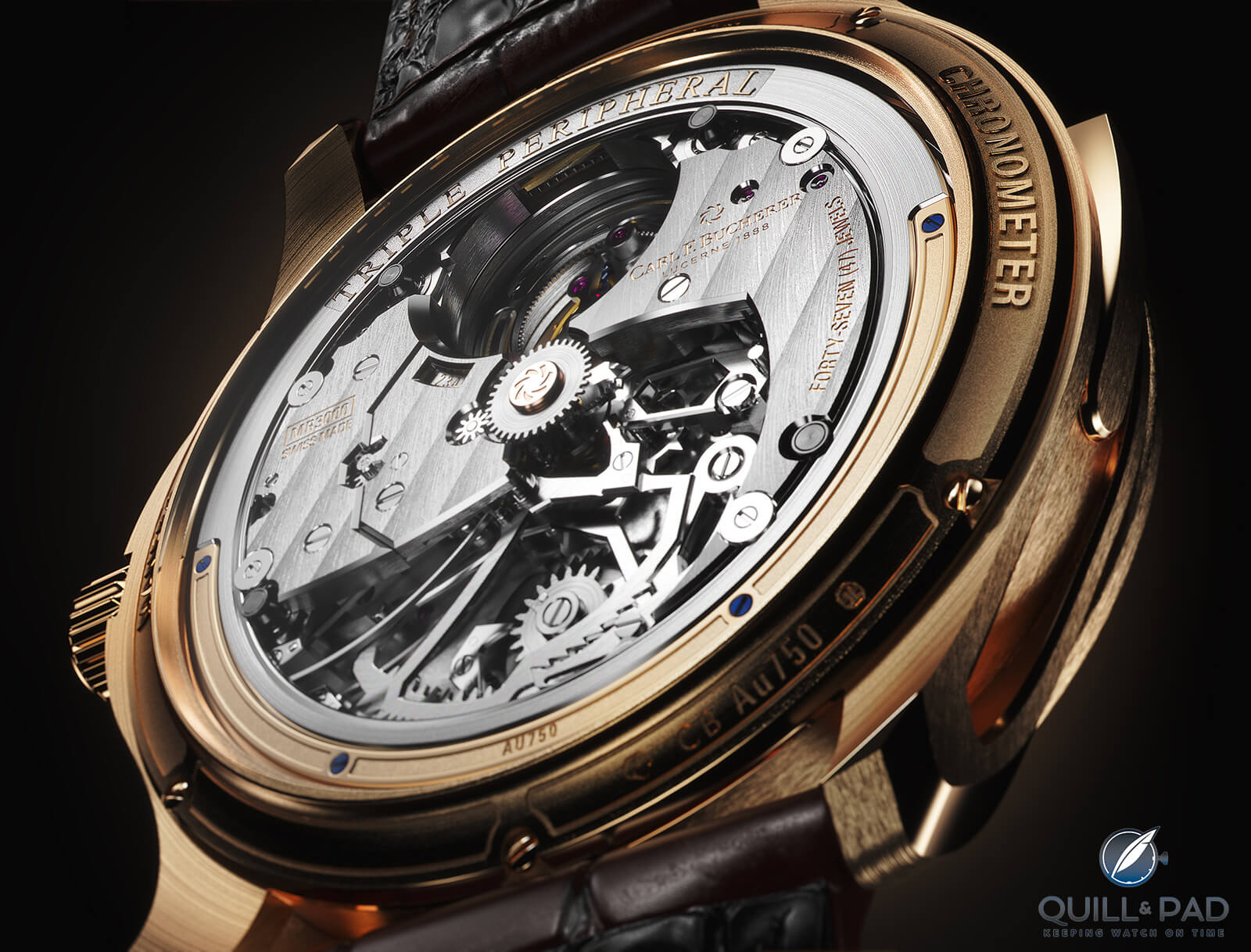
Back of the Carl F. Bucherer Manero Minute Repeater Symphony
Supported by four ceramic ball bearings and precisely retained by at least six perfectly adjusted disks at various points around the movement, the winding rotor stays nicely tucked into the edge of the case, providing a completely uninterrupted view of the repeater mechanism and rear side of the tourbillon.
The movement bridges are designed in a geometric style mirroring the repeater racks and hammers on the front. I always appreciate hard corners that aren’t just square but clearly intentionally designed as it makes the mechanics feel more dynamic. The poetry of smooth arcs and graceful curves in many movements can’t be denied as beautiful, but when a brand straightens things up and puts angular corners onto components, it takes on a different life.
The rear of the movement has a large, open area (shaped loosely like a snail cam) within which are most of the repeater components that count the hours, quarter hours, and minutes. The window to the tourbillon is even larger on the rear and allows a slightly better understanding of how the mechanism is supported.
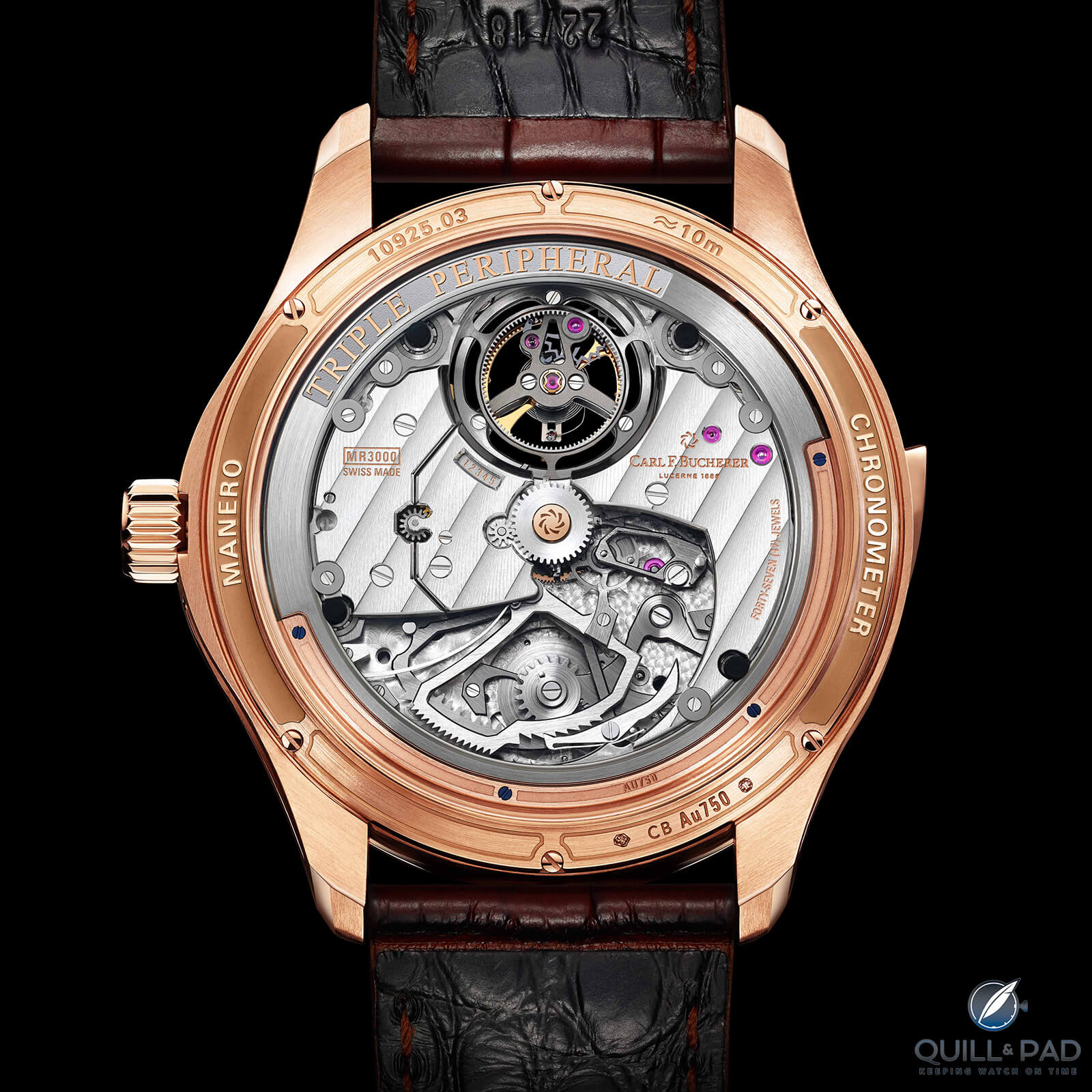
Back of the Carl F. Bucherer Manero Minute Repeater Symphony
Overall, the movement is a clean mechanical beauty deserving serious attention. Carl F. Bucherer also thought ahead to protect that movement from accidental damage during operation of the repeater mechanism.
When in operation the crown is locked, and when the crown is pulled the repeater mechanism is disengaged so it cannot be activated, indicated on the dial by either a small note or a blue dot in the indicator window.
Such an awesome movement chiming the time is a grail piece, but add in that you can set it to the exact second with the stop-second mechanism and that the movement has been C.O.S.C. certified as a chronometer, this is a top-notch piece by any account.
Of course, a grail piece comes with a grail price tag and limited availability so if this checks all your boxes and you are in the market for something like this, it is an incredible choice. The rest of us will have to look on with lust in our hearts.
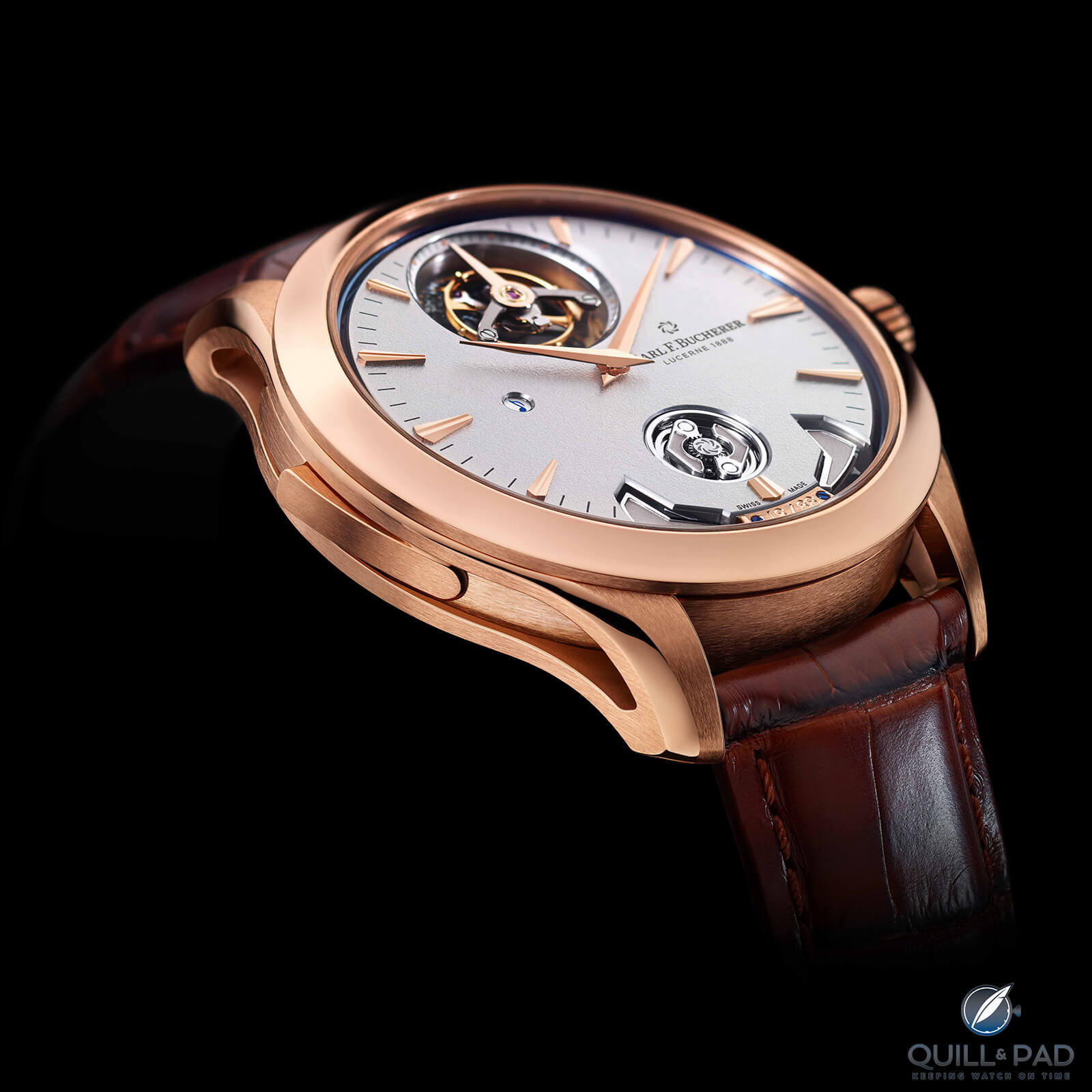
Carl F. Bucherer Manero Minute Repeater Symphony
Given the Manero Minute Repeater Symphony’s release at Watches and Wonders Geneva 2021, I have yet to see and hear it in person, so this will be my goal once we have in-person fairs once again. Until then I’ll keep ogling it from a distance and absolutely loving the choices made!
While I’m waiting, let’s break it down!
- Wowza Factor * 9.3 The low-key aesthetic can’t hide how incredibly beautiful this entire watch is!
- Late Night Lust Appeal * 93» 912.018m/s2 If it was only a minute repeater the lust would be high but have you seen that movement and all the peripheral mechanisms? Oh, boy!
- M.G.R. * 68.4 This is a pretty massively geeky movement with the various decisions for peripherally mounted mechanisms and the fact it is a visually awesome minute repeater!
- Added-Functionitis * Moderate Minute repeater with protection indication is enough for me to say this is moderately endowed with added functions. Since it avoids any date or power reserve displays it stays out of severe territory but I would still recommend the extra-strength Gotta-HAVE-That cream for the awesome mechanical beauty!
- Ouch Outline * 10.9 Existential dread of deadlines! Let’s face it, sometimes we self-impose deadlines and only near the end do we realize just how optimistic those deadlines were. Then the late nights and stressful moments where you aren’t working toward that deadline creep into your mind and the anxiety levels reach all-time highs. Still, I’ll do it again if I could be graced with such a watch as the Manero Minute Repeater Symphony!
- Mermaid Moment * Wait, three peripheral mechanisms?! I didn’t realize just how much that would push this piece over the limit but it did and now I am debating centerpiece settings and color schemes for the ceremony!
- Awesome Total * 750 First take the caliber number (3000) and divide by the number of pieces in the limited edition (88), then multiply by the karat weight of the peripheral winding rotor’s gold mass (22) and the result is a stupendous awesome total!
For more information, please visit www.carl-f-bucherer.com/en/watches/manero-minute-repeater-symphony.
Quick Facts Carl F. Bucherer Manero Minute Repeater Symphony
Case: 43.8 x 12.47 mm, pink gold
Movement: automatic Caliber CFB MR3000 with one-minute tourbillon and peripheral rotor, official C.O.S.C. chronometer certification, 65 hours power reserve, 21,600 vph/3 Hz frequency
Functions: hours, minutes, (hacking) seconds; minute repeater, repeater protection indication
Limitation: 88 pieces
Price: $399,000
You may also enjoy:
A Watch Collection Begins: GaryG And His Bucherer Chronometer
Carl F. Bucherer Manero Peripheral: A Well-Rounded Gentleman
Chopard L.U.C Full Strike Minute Repeater With Crystal Power! Plus Video: Listen For Yourself





















































Leave a Reply
Want to join the discussion?Feel free to contribute!